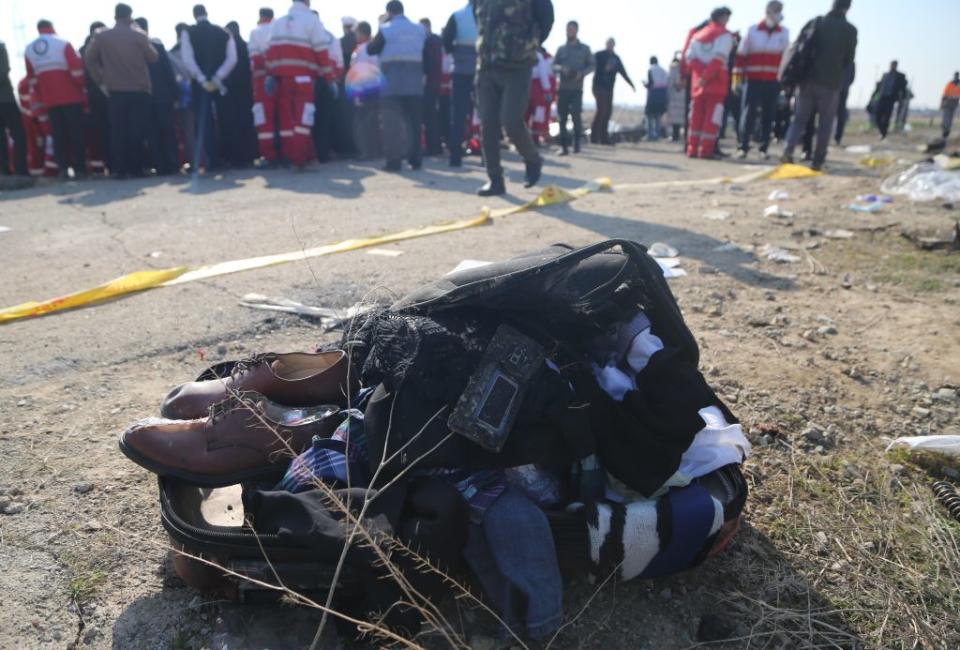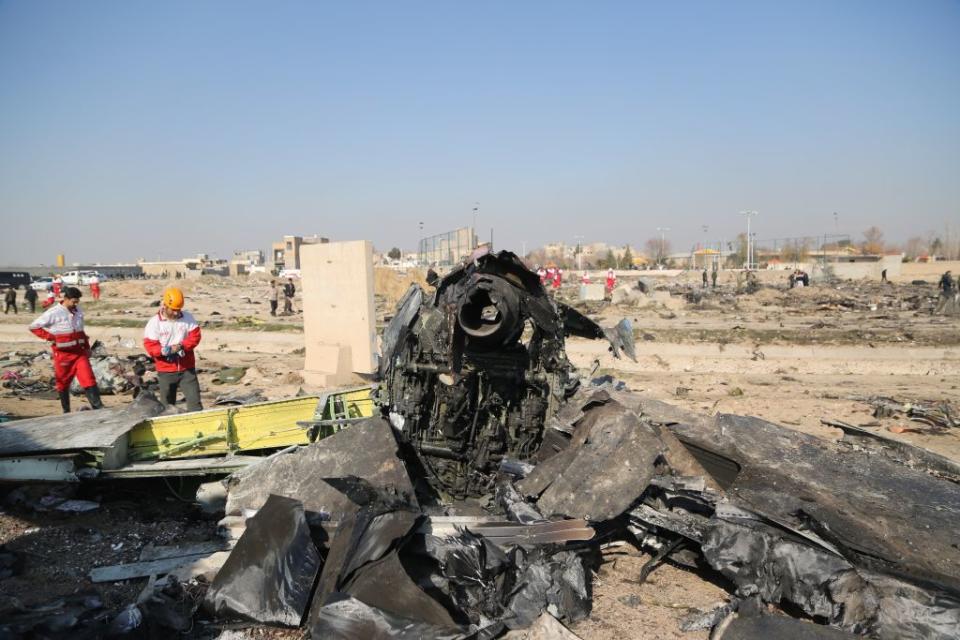'Planes don't just burst into flames': Bizarre theories emerge on doomed passenger jet
A surprise change to the official response on the deaths of 176 people on board a Ukrainian passenger plane on Wednesday has opened the door to speculation and conspiracy about the cause of the crash.
The Ukraine International Airlines Boeing 737-800, en route to Kiev and carrying mostly Iranians and Iranian-Canadians, crashed on Wednesday, hours after Iran fired missiles at bases housing US forces in Iraq.
Iran media initially blamed the accident on technical problems and Ukraine officials followed suit, but appeared to back away from the explanation just hours after the crash. Shortly after, Iran said it would not release the black box from the flight to the US or the Boeing manufacturer.
Ukraine’s embassy in Iran dropped an initial reference to engine failure as the cause of the crash and in a follow-up statement said the causes had not been disclosed and that any previous comments were not official. Ukraine Prime Minister Oleksiy Honcharuk cautioned against speculation but banned all flights to Iran.

Ukraine’s sudden about-face on the technical malfunction explanation and Iran’s refusal to release the black box to Boeing, has prompted speculation that the commercial flight may have been caught up in the military conflict in Iran.
However, five unnamed security sources - three Americans, one European and one Canadian - told Reuters on Thursday that the initial assessment of Western intelligence agencies was that the plane had suffered a technical malfunction and had not been brought down by a missile.
There was evidence one of the jet's engines had overheated, the Canadian source reportedly said.
Initially, Iranian state media reported that the plane caught fire after crashing, but a video aired by the state broadcaster, and shared online, appeared to show the Boeing 737 already on fire as it fell from the night sky.
An Iranian transport official has been quoted as saying an engine may have caught fire causing the pilot to lose control of the plane.
However a former senior inspector at the UK Air Accidents Investigation Branch (AAIB), Tony Cable, said it appeared the plane crashed vertically, suggesting it was more than a single engine failure at fault.
“I've seen a few photos of the crash site. The wreckage shows a high degree of break-up which indicates that the plane crashed vertically at speed into the ground. There seems to be a lot of relatively small pieces of debris,” he told the UK’s Sky News.
According to him, if it was a simple engine fire, the pilot would have been able to shut off one engine and execute a controlled landing.
‘Engines don’t just burst into flames’
If an engine fire turns out to be the official explanation, it comes down to what caused the fire and what compounding system failures it might’ve triggered, says Dr Geoff Dell, accident forensics and investigation expert from CQ University in Sydney.
“Depends on what caused the fire, engines don’t just burst into flames there’s got to be something that led to that.
“All of these types of accidents are a function of a sequence of failures. It’s very rare for a single failure to lead to a catastrophic loss,” he told Yahoo News Australia.

An engine fire, if uncontained, could affect other parts of the plane such as the hydraulics system and plane’s electric-based flight controls.
“All the aviation systems have checks and balances so you need more than one thing to go wrong for something serious to happen.
“If you get an uncontained failure you get collateral damage and that is what can cause the controllability issues.”
Flight tracking data shows the plane came down shortly after taking off, which is a particularly bad time for an engine malfunction to take place. The airline confirmed the plane disappeared from radars a few minutes after takeoff.
“An engine failure on take-off is critical because you’re going slow and got lots of drag, and then you get asymmetric thrusts,” Dr Dell said.

However, until investigators can analyse radar data, debris and get their hands on the black box, it is impossible to tell what caused the crash, he said.
“From what’s been said in the media there’s a lot of speculation but not much in the way of hard data.”
While internet sleuths have tried to identify potential damage to the craft that indicates it was hit by Iranian fire, there is little evidence to underpin the theory at this point, and photos from the wreckage don’t appear to show any major signs of such damage.
Iran likely downed a #Ukrainian Boeing 737 near #Tehran last night by mistake when their air defense was on alert for US airstrikes. Video of plane burning in the sky, bullet or shrapnel holes in the plane, 176 killed. #Iran refuses to turn over the black box flight recorder... pic.twitter.com/GDaa8eK6Qz
— Matthew VanDyke (@Matt_VanDyke) January 8, 2020
‘Fog of war’ clouds much needed information
Ali Avez, Director of the Iran Project at Washington-based think tank Crisis Group, said it’s hard to get answers given the unstable situation in Iran at the moment.
When asked if he thought the plane had been caught up in the military tension between the US and Iran on Wednesday, he said it is hard to say because of a lack of information.
“But the timing of it, it occurred a few hours after the operation was completed, makes me believe it might have been an accident,” he told the ABC Thursday.
“But in this fog of war, it is very difficult to get accurate and information.”
The crash comes at a difficult time for plane maker Boeing Co, which has grounded its 737 MAX fleet after two crashes.
The 737-800 is one of the world's most-flown models with a good safety record and does not have the software feature implicated in crashes of the 737 MAX.
Mr Cable said it was “pretty unlikely” that the Ukraine flight suffered from the same flight control issues that downed flights in Indonesia and Ethiopia in recent years, forcing Boeing to ground its fleet.
"We are in contact with our airline customers and stand by them in this difficult time," the manufacturer said in a statement earlier on Wednesday. "We are ready to assist in any way needed."
In Paris on Wednesday morning (local time), the maker of the plane's engines, French-US firm CFM, said speculation regarding the cause was premature.
Ukraine said it was sending a team of experts to Iran to investigate.
With Reuters
Do you have a story tip? Email: newsroomau@yahoonews.com.
You can also follow us on Facebook, Instagram and Twitter and download the Yahoo News app from the App Store or Google Play.




